1. Yu Qiaoxin: please tell us how to address you?
Interviewee: Shao Yuanming
2. Yu Qiaoxin: What's your company name?
Interviewee: Shaoyong Yi college, Luoyang, China
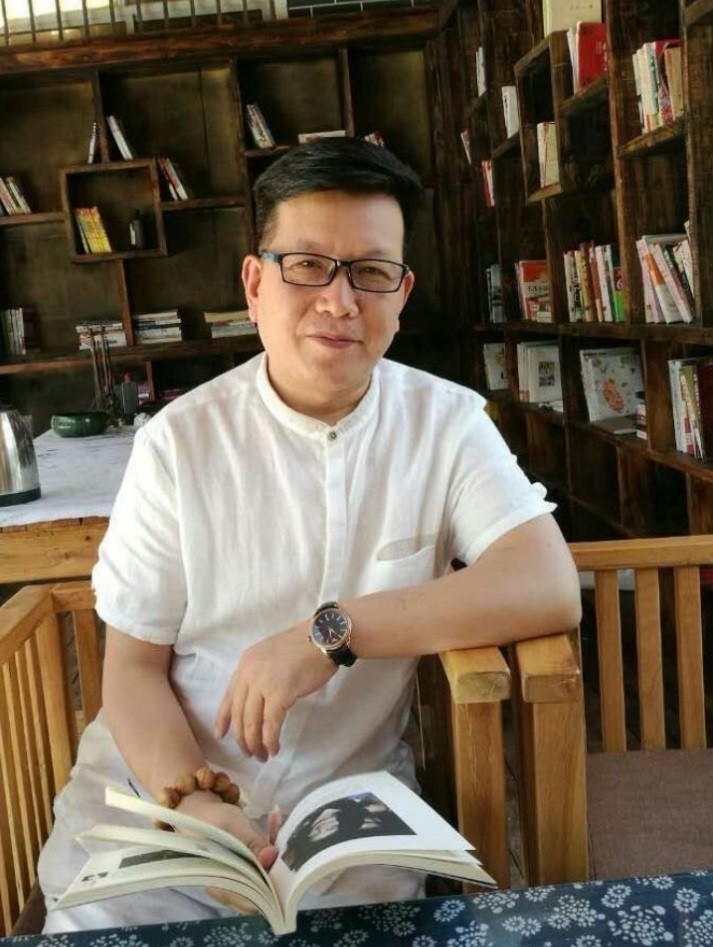
3. Yu Qiaoxin: What position do you hold in the company?
Interviewee: Dean of College
4. Yu Qiaoxin: Which city are you located in?
Interviewee: Luoyang
5. Yu Qiaoxin: Why are you currently engaged in this industry?
Interviewee: As the source of Chinese culture, Hetu Luoshu is the foundation of Zhouyi numeracy. The most famous source of the eight trigrams comes from the book of changes, which is "the river draws the picture, Luo writes the book, and the sage makes it". According to this, the ancients believed that the eight trigrams were derived from these two pictures, thus becoming one of the important topics in the study of the book of changes. Because all the dynasties thought that they were "the dragon and the horse bear the burden on the body, and the divine tortoise was listed on the back", for many centuries, Hetu Luoshu has been covered with mystery, which is recognized as a mystery of the origin of Chinese culture for thousands of years, and it is an impenetrable Tianshu culture.
He Tu and Luo Shu are the most legendary and mysterious Yi Tu in the history of China, and they are closely related to Shao Yong's school in the Northern Song Dynasty. There are rumors on the road that it was the ancestor Chen Tuan, Shao Yong's grandfather, who handed down the Dragon map. After three changes, the Dragon map became a river map, a Luoshu map and a congenital eight trigrams map. However, according to Shao Bowen's recollection in the book of changes, Shao Yong's school origin is not only Chen Tuan (871-989), but also Wang Tong and Guan Lang at least.
Shao Kangjie all take ten as river map and nine as Luoshu. According to Liu Mu's conjecture, nine is the river map, and ten is Luoshu, which is based on Xiyi, which is not consistent with the old Confucian theory, but also quoted from Dazhuan that both of them are from Fuxi In the world, there is no clear proof of its easy purchase of books. ". This is based on Shao Yong's and Guan Lang's theories. Shao Yong of the Northern Song Dynasty believed that "the number of river maps is covered by a circle, and the text of Luoshu is the square one.". Therefore, sacrificing the text and creating changes, Yu Ji narrated it and made fan. ". It is not clear that there are ten pictures and nine books. In Guan's Yi Zhuan of Guan's family in the Northern Wei Dynasty, it is said that "the text of the river map is composed of seven front and six rear parts, eight left and nine right sides. Therefore, three out of seven think of separation and strangeness of Xun; three of eight think of shock, and wonder of Gen; three of six of ten think of Kan and Qi of Qian; three of nine of ten think of Dui and Kun. Those who are upright are full of their positions, and those who are even do their best in painting. There are nine front and one back, three left and seven right, four front left, two front right, eight rear left and six rear right ". Ten is the river map and nine is Luoshu. Zhu Xi thought that Guan's Yi Zhuan was a fake book, probably written by Ruan Yi of the Northern Song Dynasty. The nine palaces were used as Luoshu in the Tang Dynasty, and the river map as the fifty-five figures, and Chen Tuan's Dragon painting also had this meaning, which were not the original ideas of Ruan. It is Cai Yuanding's explanation that Shao Yong's theory of Heluo is ten rivers and nine Luo. Zhu Xi agreed with CAI's theory and recorded his Heluo schema, which was listed in the beginning of the book of changes, which became popular since the Southern Song Dynasty.

He Shi Luo Jiu and Shi He Jiu Luo. Cai Yuanding's understanding of Hetu and Luoshu in the Southern Song Dynasty is contrary to Liu Mu's theory of "nine pictures and ten books". Cai Yuanding believed that Liu reversed the Hetu and Luoshu, and advocated that the number of Hetu should be ten and the number of Luoshu should be nine, that is to say, the ten figure formed by the five elements should be called "tu-10"; the nine palace nine figure map should be called "Shu Jiu". It is believed that "ancient and modern biographies, since Kong Anguo, Liu Xiang, father and son, Ban Gu, were all sacrificed by the river map, Luoshu Xiyu. Guan Ziming and Shao Kangjie take ten as river map and nine as Luoshu. According to Liu Mu's conjecture, nine is the river map, and ten is Luoshu, which is based on Xiyi, which is not consistent with the old Confucian theory, but also quoted from Dazhuan that both of them are from Fuxi In the world, there is no clear proof of its easy purchase of books. ". This is based on Shao Yong's and Guan Lang's theories. Shao Yong of the Northern Song Dynasty believed that "the number of river maps is covered by a circle, and the text of Luoshu is the square one.". Therefore, sacrificing the text and creating changes, Yu Ji narrated it and made fan. ". It is not clear that there are ten pictures and nine books. In Guan's Yi Zhuan of Guan's family in the Northern Wei Dynasty, it is said that "the text of the river map is composed of seven front and six rear parts, eight left and nine right sides. Therefore, three out of seven think of separation and strangeness of Xun; three of eight think of shock, and wonder of Gen; three of six of ten think of Kan and Qi of Qian; three of nine of ten think of Dui and Kun. Those who are upright are full of their positions, and those who are even do their best in painting. There are nine front and one back, three left and seven right, four front left, two front right, eight rear left and six rear right ". Ten is the river map and nine is Luoshu. Zhu Xi thought that Guan's Yi Zhuan was a fake book, probably written by Ruan Yi of the Northern Song Dynasty. The nine palaces were used as Luoshu in the Tang Dynasty, and the river map as the fifty-five figures, and Chen Tuan's Dragon painting also had this meaning, which were not the original ideas of Ruan. It is Cai Yuanding's explanation that Shao Yong's theory of Heluo is ten rivers and nine Luo. Zhu Xi agreed with CAI's theory and recorded his Heluo schema, which was listed in the beginning of the book of changes, which became popular since the Southern Song Dynasty.
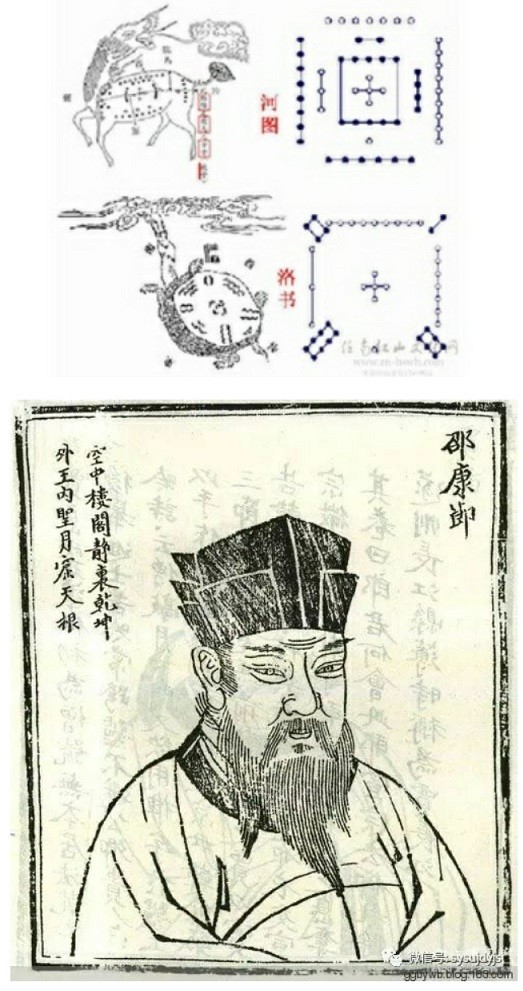
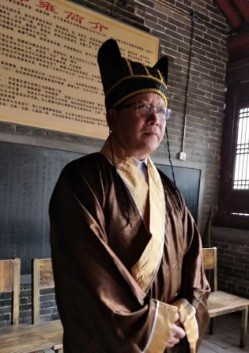
Yu Qiaoxin: What is the relationship between Luoshu and traditional Chinese medicine and in your opinion?
Interviewee: The relationship between Luoshu and traditional Chinese medicine and my personal opinion
One
Luoshu evolved the congenital eight trigrams, and the river map evolved the acquired eight trigrams. The original meaning of books and eight trigrams was to express astronomical calendar. The relationship between books and eight trigrams is solved here. The October solar calendar in Luoshu is divided into five seasons. The five seasons are expressed by the five elements of gold, wood, water, fire and earth. The five seasons begin with wood and end with water, a line of 72 days. The five seasons come and go. A line of two months, odd months for Yang, even months for Yin. This is a dichotomy of yin and Yang. A year is divided into heat and cold, heat and cold are Yang and cold are yin. This is a dichotomy of yin and Yang. The two months of each row are odd and even. Parity is Yin and Yang, yin and yang are parity. The odd and even Yin and yang are divided into yang wood, Yin wood, Yang gold, Yin gold, and so on. The relationship between yin and Yang and five elements is explained by the calendar. The October solar calendar, also known as the five element calendar. The five elements belong to the calendar, and the calendar itself comes from quantitative measurement. Therefore, the quantitative five elements have nothing to do with the illusory metaphysics.
Is there any therapy in Luoshu? Can Tianshu culture produce technology? Many senior scholars of culture, traditional Chinese medicine, Yi ology and Daolin practice began to understand my paper "miraculous and mysterious Luoshu therapy" in Wu Hun and other media. After practice, it was really effective, and they came to inquire in surprise, feeling that this Yanhuang Shengxue had finally been preserved. This technique was taught by an elder of Shushu in Yihai year. I felt that it was simple, profound and interesting. It had many advantages, such as good curative effect, quick effect, no pain, no need to spend money, no auxiliary equipment, green and healthy, everyone is feasible, and can be applied at will. It can be used for academic research and rejuvenation of Chinese medicine. It is in line with the great unified health view of human nature in Chinese culture. In today's advocacy of "national health", it is not a crime to make this law public so that there will be successors to the sage learning of our ancestors.
"The highest number of heaven and earth begins with one and ends with nine." (Lingshu), the image of Luoshu, is a manifestation of the existence of heaven, earth and numbers. In the Holy Scripture of traditional Chinese medicine Lingshu - Jiuzhen, there was a special text to explain the mathematics and mathematics of the human nature holography corresponding to the human body's limbs and body shape.
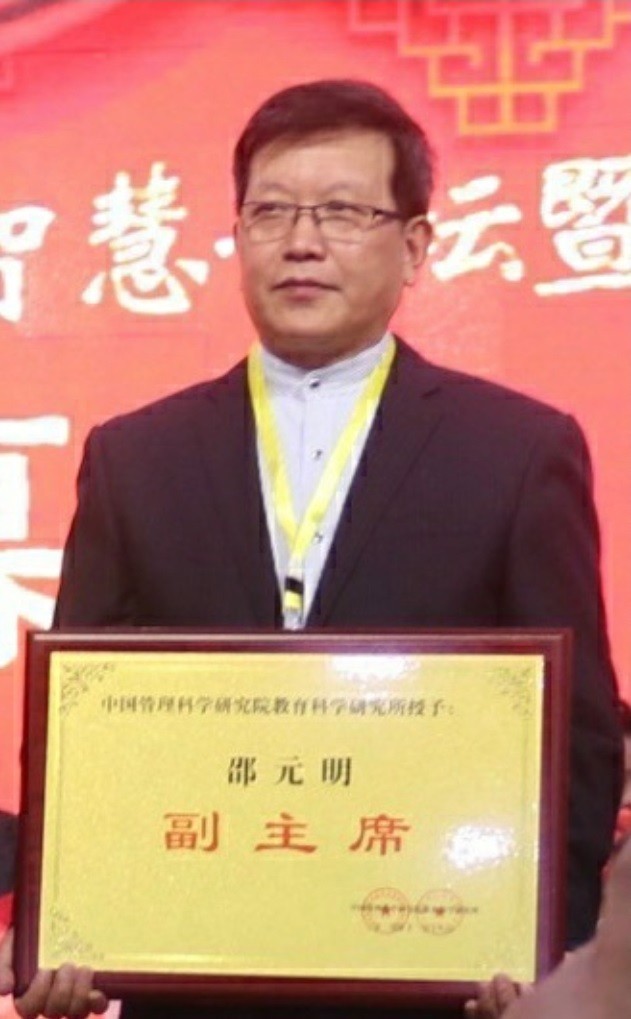
Two
In my opinion, "9" is the head in the distribution and jurisdiction of the nine heaven and earth numbers in Luoshu. In fact, the head, throat, neck, spine, heart and small intestine all belong to the "9" area; "2" and "4" refer to the shoulder, which should also include the left and right hands (the line from the ear to the finger). "6" and "8" refer to the left and right feet, which should also include the line from groin to toe; left 3 and right 7 are considered as "left liver and right lung", "3" refers to liver, gallbladder and pulse, belonging to the left side of the whole body; "7" refers to the right side of the whole body; 5 refers to the areas of Dantian and Huangting, which should also include liver, kidney and six Fu organs; "1" refers to liver, gallbladder and pulse It is the line at the lower end of Ren meridian (navel to genitalia), including the reproductive system.
Knowing that these nine heaven and earth are in the "administrative regions" of the human body, we can learn more about their sensitive points (equivalent to the capital), and use sensitive points to treat diseases and get immediate results. The sensitive points of "2" and "4" are located in the earlobe, as well as the granular bone points in the lunate bone of the palm, which are called "spiracles" in the medical school of mathematicians. In the "sensitive points" of the "Three Acupoints" and "the other points of the acupoints" of "the first and the second part of the" acupoints "are the" sensitive points "and" the points on both sides of the body "in the" three points "and" points of the "points of" the "points of the" sensitive points of "the" points of "the" points of "the" points of "the" points of "the" points of "the" and "the" points of "the" points of "on both sides of the" and "the" points of the "of the" of "the" of "on the" of "the" of "the" of "the" of Push the inner side of the thumb laterally to Baihui Point, one tight and one loose, which has the magical effect of waking up and first aid. There are also sensitive points on the head and temporary tenderness points on the spine. The sensitive point of "1" is at Huiyin point; the sensitive point of "5" is at Shenque point.

When we study Luoshu, we will all notice such a phenomenon: the nine numbers arranged in this way will add up vertically, horizontally and obliquely, and the result is "15". This coincides with the moderate balance thought of "one Yin and one Yang combined into the fifteen is called Tao" in Yi Wei. According to the philosophy of the motherland, human beings are born from the harmony of heaven and earth. The reason why all things can continue to grow is due to the interaction between yin and Yang, and the function of "keeping harmony and benefiting Zhen". Heaven, earth and man are the three talents. Man and all things are in it. The Yin and Yang of heaven and earth are moderate, and people and all things can live. Therefore, Fuxi's divination and drawing of hexagrams take neutralization as the key. "Plain questions" said: "carefully observe the location of yin and Yang and adjust it, in order to smooth the period." When a person is in a healthy state, yin and yang are said to be flat; if Yin and yang are separated from each other, health and even life will be lost. Therefore, the most fundamental reason for the occurrence of diseases is the disorder of yin and Yang in the human body, while the prevalence of strange diseases is due to the imbalance of yin and Yang in the general environment. Therefore, balancing yin and yang to a moderate state is an important guiding ideology for us to cultivate our moral character, regulate our family and conduct ourselves in the world.

Three
As the ancients said, "it is formed in heaven and formed in the earth." Also known as "extreme number, then set the image of the world.". If we change the Luoshu slightly, we can deduce it into a riddle and ten thousand characters in world history, anthropology and religion. In fact, the ten thousand characters are closely related to the Hetu Luoshu and the nine palace eight trigrams. It has four main points and nine corners. It is not so much the sun light shining in front of Buddha's chest, but rather the transformation form of Luoshu. According to the research of Master Yi Jun of our school, Wanzi is actually the "pictograph" of Beidou that revolves around Polaris in four seasons of the year and directly projects on the earth, representing the laws of celestial movement.
The harmony of yin and Yang and the mastery of nature are enlightenment, health and achievement. In Luoshu, the sum of the vertical, horizontal and oblique diameters is "15". It can be seen that "15" is a stable and healthy number with balance of yin and Yang. If the Yin and yang are unbalanced, pathological changes will occur, so whether the number of lesions or the related numbers or the sum of Luoshu square array will change. We can restore the total harmony of "15" by adjusting the relevant parts, so that the lesion position will be adjusted accordingly, and the disease field will disappear, so as to achieve health.
The number of the nine palaces in Luoshu is as follows:

Donggong: 3 + 4 + 8 = 15; Nangong: 9 + 2 + 4 = 15
Xigong: 7 + 6 + 2 = 15; Beigong: 1 + 6 + 8 = 15
North South straight Palace: 9 + 5 + 1 = 15; East West Straight Palace: 3 + 5 + 7 = 15
Southwest and northeast Palace: 2 + 5 + 8 = 15; Southeast and northwest Palace: 4 + 5 + 6 = 15
Clinical treatment: if this time came to a patient with left foot sprain, how to use Luoshu therapy for treatment? We know: the left foot is "8", and the square array associated with it are the East Palace, the North Palace and the southwest northeast palace. Taking the southwest northeast palace as an example, 2 + 5 + 8 = 15, "5" in the middle is the Shenque, "2" is the right line. We let the injured extend their right hand, and the operator pinches the bone of his right hand, and tells the injured to stamp his feet 55 times without fear of pain! Wait until the end of 55, send off the hand, and let him stamp his feet to see the effect.
Maybe, just for two times, when I came just now, I still had to support the pain of the wounded. Now I can walk like a fly.
-----Chinese culture, Chinese belief and Chinese power-----
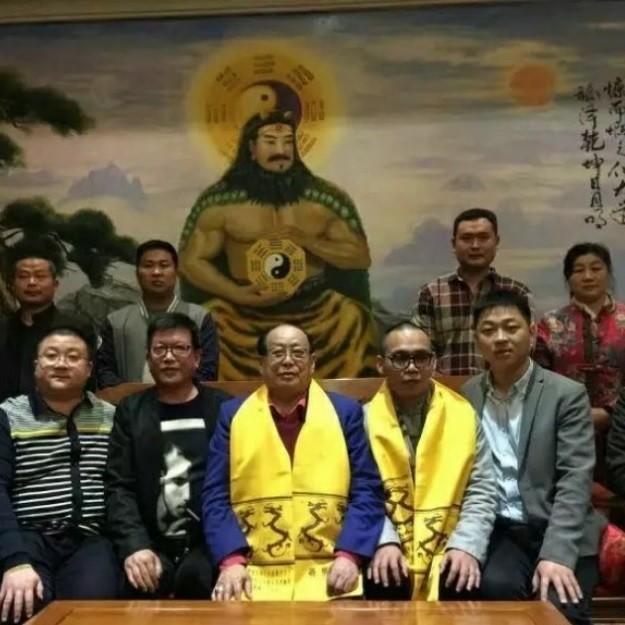
Four
Heluo culture is the core culture of the Chinese nation
What we usually refer to as Chinese culture is a culture created by many ethnic groups with the Han nationality as the main body within the territory of China today. A large number of archaeological materials and ancient documents show that Chinese culture is the mother culture of Han culture and Chinese national culture. Chinese culture mainly originated from the early Xia and Shang culture of ancient China and Longshan culture of Henan Province, which was the direct source of the formation of Chinese culture. Heluo area is an important distribution area of Longshan Culture in Henan Province. In this regard, Heluo area can be said to be the birthplace of Xia culture and Chinese culture, as well as the core area of its formation and development, as well as the birthplace of later Han culture and Chinese national culture.

6. Yu Qiaoxin: If someone wants to know more about you and your company, how can I contact you?
Interviewee: You can contact the “boss said” platform representative Mrs. Qiao Xi. The the service telephone number in China is: 13705732507


